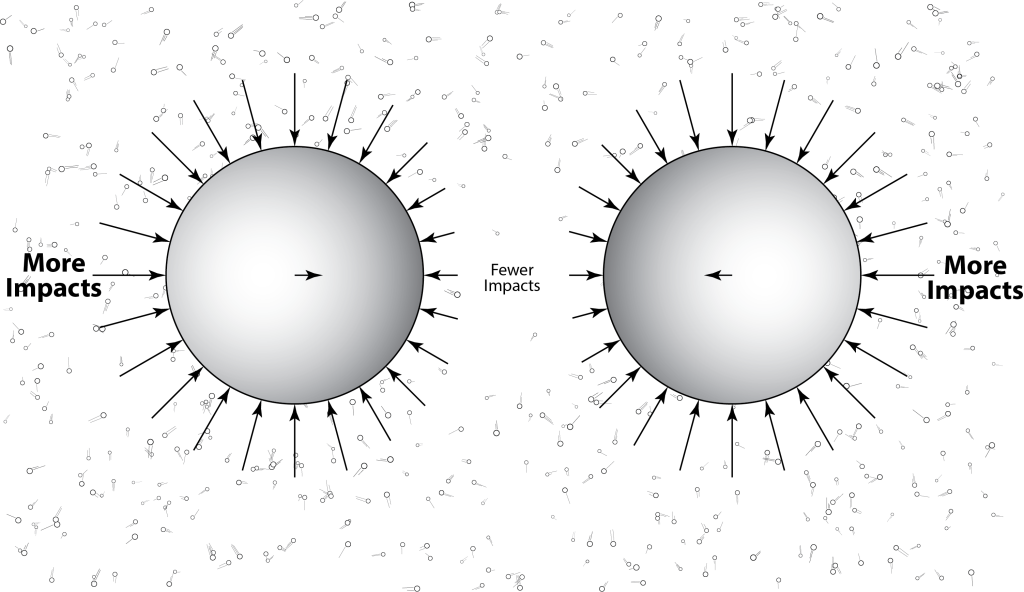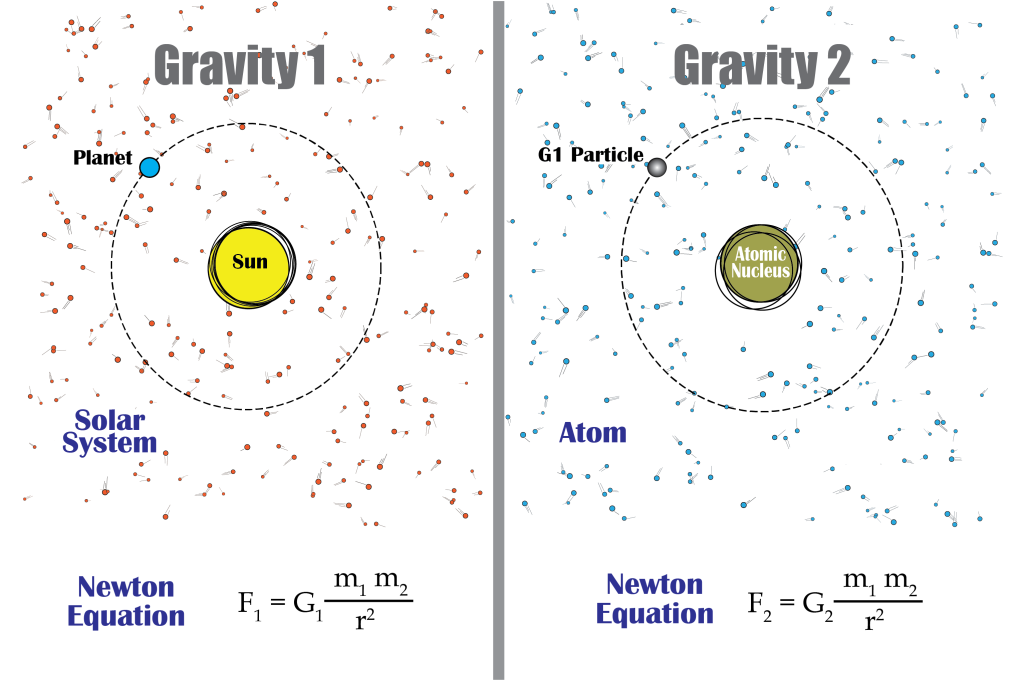Gravitic motion is random, magnetic motion is orbits, electric motion is flows, and luminic motion is waves of bodies moving together. As shown in our first book\cite{Principia-Mathematica}, it is possible to ‘hack’ or visualize the universe by using and combining these four motions. It is the claim of we authors that all fundamental forces in the universe can be described in a combination of these four forces.
For historical reference, gravitic motion has been around hundreds of years in the form of gravitons.\cite{graviton_history} It is not known to the public because it is not considered an accepted model of gravity in modern physics.\cite{graviton_status} Magnetic motion was described in 2006 by Ionel Dinu of Romania\cite{dinu-underwater-cylinders} and is known to hundreds or at most by thousands of people around the world. Luminic motion and electric motion was described in 2015 by our authors, Robert and David de Hilster, respectively, and is currently known only by a small number of people.\cite{Principia-Mathematica}.
For the most part, these four motions \textbf{based on the same particle} are new to the world of physics. Fundamental motions are commonly described in physics as being linear, circular, rotational, periodic, random, harmonic, etc. The origin of these classifications are rooted in empirical observation and are not what we consider to be universal. These commonly mentioned motions come from how engineers describe the motions that they use in machines or observe in nature. The 4UMs on the other hand, come from the observation of fundamental forces in the universe, none of which are not man-made.
The four universal motions are simplistic in nature, yet their combinations allow for the creation of all the complexities of the universe from the infinitely small to the infinitely large. All modern equations in physics can be derived from how objects are affected by these motions of bodies at all levels of the universe. All forces in the universe are reduced to physical collisions, and at any one level of the universe, there is a principal body or particle that organizes that level.
Gravitic Motion (Gravity)
The foundational and simplest universal motion in the universe is gravitic. Gravitic motion is comprised of similar bodies traveling in random directions. Random motion is the least organized motion yet is the motion that organizes the entire universe at all levels, each with their own organizing particle or body. Gravitic motion causes larger bodies to orbit, curve, or flow in a direction. The three other universal motions of light, magnetism, and electricity cannot exist without gravitic motion.
Gravitic Motion Defined
Gravitic fields are made up of moving bodies with the following characteristics:
- travel in straight lines
- travel in random directions
- are similar in size and mass
- have similar speed
- are significantly faster than the bodies they are affecting
- are significantly smaller than the bodies they are affecting
- occur at all macro or micro levels of the universe
- can be any type of moving body
Shadowing Effect
Random particles when colliding with objects have the net effect of pushing two objects closer together causing orbits and objects to fall to the ground on earth. Many G1 particles pass through mass given there is so much space in mass.

The live animation below shows the shadowing effect at work. This animation shows 3500 G1 particles moving in random directions that collide into the two larger bodies. Half of the G1 particles hit the bodies and half go all the way through. Remember that atoms are 99.999% space.
With each hit from these particles, it moves the large bodies and with fewer G1 particles hitting them from the middle because they are being blocked, the two bodies move towards each other.
Live Simulations
Below is a live computer model that calculates movements and physical collisions. What you are seeing are two large spheres that in the beginning of the animation, are slightly pushed towards each other while smaller particle moving in random directions strike the two blue circles. Half of the smaller particle pass through the blue circles and half collide eith the bigger circles. The result is the the two blue circles accelerate towards each other given the “shadow effect” mentioned earlier.
Inertia
Galileo Galile was one of the first to talk about “inertia”” which was eventually formalized by Newton in his first law of motion which he called the law of inertia. Newton states:
First Law (Law of Inertia): An object at rest stays at rest, and an object in motion continues moving at a constant velocity unless acted upon by an external force.
– Isaac Newton
Newton states that a body continues to stay at a constant velocity unless acted upon by another force. Newton, nor anyone else, tells us “why” a body stays in motion. With gravitic, motion, we now must modify the definition of inertia:
Inertia: bodies in motion within a gravitic field keep in motion because of the random impacts upon that body by the smaller bodies in the gravitic field keep it moving.
- de Hilster & de Hilster
This is the same simulation except it is only has one large body. In the beginning of the animation, the large body is pushed to the right. After that, the only forces that are hitting it occur from random smaller particles. The body continues to move in the same direction without any apparent slowdown.
Two Gravities
There are two separate gravities in our local world: one at the celestial level and another at the quantum level. Gravity one is caused by the G1 particle moving in random directions. Gravity two is caused by G2 particles moving in random directions keeping G1 particles in orbit around the atomic nucleus. G2 particles by definition have to be magnitudes faster than the speed of light to make G1 particle curve.

The Coulomb equation is in reality a gravitic force equation just like Newton’s equation. That is why they are both inverse square equations.

Read About the Four Universal Motions:
![]()
